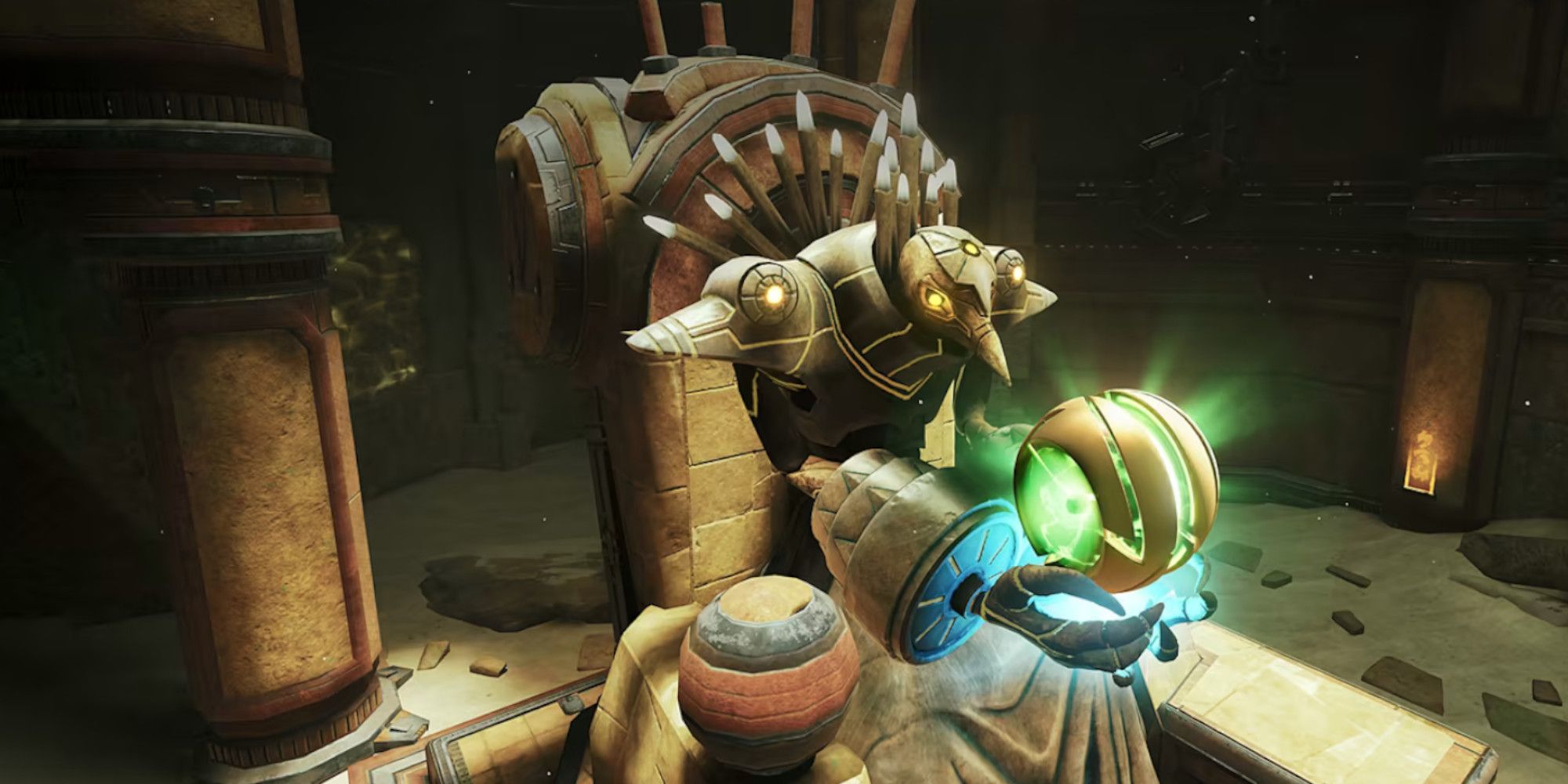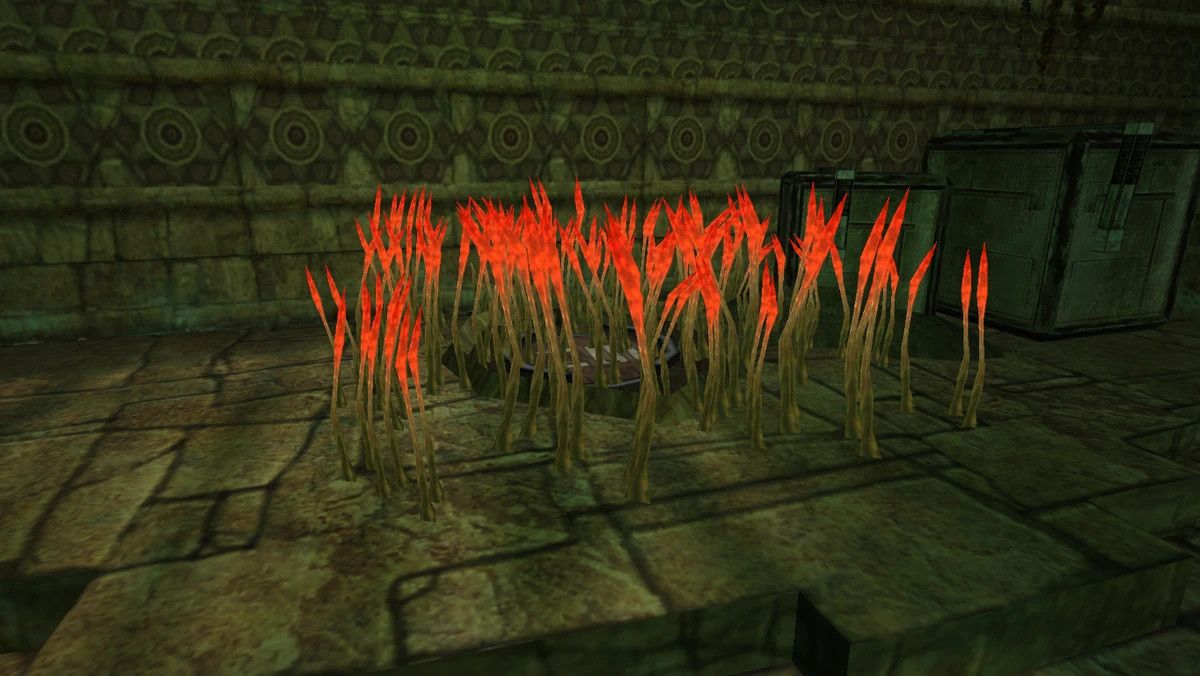World building, and its slightly-more pretentious sister-term environmental storytelling, are overused when describing video games. When people say world building, they usually mean the game has cool lore, or that they like the art direction. In reality, good world building is all about designing systems, gameplay, and levels that reflect and enhance the world your game takes place in, in order to give players a sense that they’re somewhere real. Every game is created for and centered around the player, but games with good world building are able to create a fusion between gameplay and narrative - often through environmental storytelling - to create the impression that the world existed long before you pressed Start Game. One of the best to do it is Metroid Prime, a game that came out more than 20 years ago, yet remains the highmark for exceptional video game world building.
I recently wrote about the way that Metroid Prime unfolds like a detective story. It begins aboard the Space Pirate frigate called Orpheon, where Samus responds to an emergency distress signal. On board, she discovers the pirates have been experimenting on life forms abducted from Tallon IV, the planet around which the frigate orbits, using some kind of unknown energy. The pirates lost control of their test subjects and were killed before Samus arrived, but using her Scan Visor she’s able to gather valuable information from their corpses and start to put the pieces together. After narrowly escaping the vessel's self-destruct sequence, Samus lands on Tallon IV to continue her investigation.
Upon arrival, Tallon IV appears to be tranquil. When Samus emerges from her ship, she surveys her lush surroundings as a soft rain lightly splashes off her visor. Aside from the sound of a nearby waterfall and the gentle, low-fi synthwave music in the background, all is quiet. There are no enemies nearby, and as she explores the landing site, the only signs of life is a patch of wriggly grass. Scanning it reveals its name, tangle weed, and this description: “Tangle Weeds are only dangerous to small organisms. They are covered in tiny barbs designed to trap potential meals. Tangle Weeds lack the strength to do anything more than hinder larger lifeforms.” Tangle Weed can’t hurt you, but the implication is clear. If it could, it would.
Tallon IV is, of course, a hostile world. It wouldn’t be a very good action game if it wasn’t, after all. Having enemies to fight is an essential part of the gameplay loop, but Metroid Prime doesn’t throw combat encounters at you just for the sake of it. How and when you fight is just as important as what and why you fight. This is a quality that a lot of games overlook, but it’s what makes Metroid Prime stand out. The moment you set foot on Tallon IV two things are immediately apparent: this is a beautiful world worth protecting, and the grass wants to kill you.
As you explore further, that dynamic only becomes more present. In the Chozo Ruins where you first learn about the planet’s original inhabitants, your progress is eventually blocked by flooded areas filled with poisoned water. Nearby you encounter venom weed, a mutated form of tangle weed that damages you if you stand in it. If you haven’t put the pieces together, a message on the wall near the ruined fountain should clue you in:
“The surges of negative energy brought by the meteor far exceed our expectation. We Chozo have yet to find a way to rid ourselves of the Great Poison. All we can do now is seal it away and wait for the day when a power to purify the poison appears. However, it is already impossible to collect all the pieces of the Great Poison, as it has already spread, seeping into the planet and hardening.”
The planet has been corrupted by something the Chozo called the Great Poison, and it seems they died out trying to contain it. The enemies you face are a by-product of that contamination, and the peaceful world you glimpsed upon landing still exists, if only there was a way to contain the poison. Investigation begets action - this is why you’re here.
There’s a building sense of dread around the infection as you get closer to the source and the threat increases. The relatively harmless venom weed starts to appear more often, and you're faced with even bigger, more dangerous corrupted plant life, like the reaper vines that grow out of the walls and slash at you with blade-like appendages. It is standard video game practice for enemies to get stronger and more dangerous as you progress, but Metroid Prime is able to build that progression into the narrative, and vice versa. You are getting closer to the source, and whatever it is wants you to stay away.
Eventually you gain access to the Sunchamber and discover Flaahgra, Metroid Prime’s first major boss and the source of the poison. Flaahgra resides in the center of the greenhouse surrounded by mirror arrays that feed it sunlight. The Chozo grew this giant plant for cultural or religious value, but the Great Poison corrupted it, and now it leaks poison in the planet’s freshwater.
The boss fight itself is a microcosm of Prime’s exceptional marriage of gameplay and storytelling. By hitting the mirrors with your missiles you’re able to redirect them and remove Flaahgrah’s source of sunlight. This weakens the monster, which forces it to retract its roots. This opens a channel for you to use your newfound morphball ability to breach its root system and damage it with bombs. This battle is Prime’s best because of the way it combines Prime’s main gameplay loop - figuring out how to combine Samus’ abilities to solve a problem - with thematic and narrative elements that make the fight feel real and meaningful. When Flaahgra dies, you’re rewarded with the Varia Suit and the planet’s water is cleaned. You as the player get the obligatory upgrade for beating a boss, while Samus heals one of the planet’s maladies.
Metroid Prime is full of great world building just like this that makes Tallon IV feel like a real place with history that Samus can affect and change. There isn’t a single hallway or room on the entire planet that doesn’t serve a greater purpose beyond its gameplay implications. It’s a fully realized place thanks to Retro’s tireless efforts to always justify level design with narrative intention. This is what thoughtful world building looks like, and in all these years no one has done it quite like Metroid Prime.


